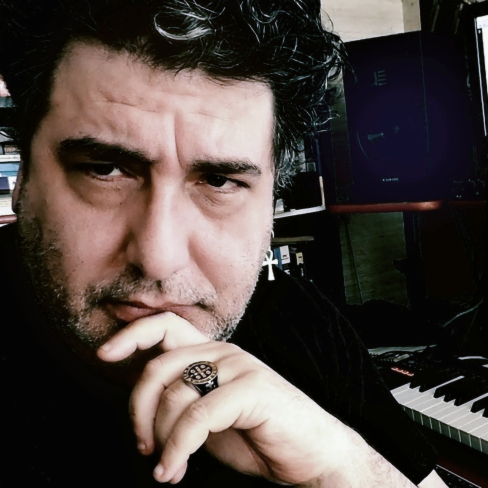Music Applied to Images by Gregorj Cocco
Gregorj Cocco, born in 1971, began his musical journey in Italy in 1989 at the Pierluigi da Palestrina Conservatory in Cagliari. Under the guidance of Maestro Franco Oppo, he immersed himself in the Experimental Composition course, laying the foundations for a sonic aesthetic that would evolve into composing music applied to images.
His first compositions in 1991, created using the Oktalyzer software for Amiga, reflect an instinctive desire for musical experimentation and expression.
It was during this period that Cocco developed a deep interest in audio trackers, fundamental tools in his production-composition phase. These software applications allowed him to manage audio samples, manipulate, reproduce and combine them in tracks, as well as create complex musical sequences through audio sequencing.
Expressive and Spontaneous Environment for Musical Growth
In 2010, Cocco moved to Amsterdam, driven by the search for a humanly rich and authentic environment. The Dutch capital, renowned for its cosmopolitanism, seemed to promise to enhance the genuineness and empathy that had characterised his early experiences in Sardinia.
However, from 2013, reality proved to be very different from expectations.
Cocco found himself faced with an unexpectedly barren and commodified environment, where materialism and individualism starkly contrasted with his vision of human authenticity. How could one present oneself artistically to people already emotionally barren? In that precise context, he bitterly realised that seeking an artistic connection with individuals indifferent to the most basic natural empathy was like trying to draw blood from a stone – an endeavour as futile as it was painful. This dissonance led him to an unforeseen existential and creative challenge: Opting for a deep and conscious solitude.
Dutch ‘Sacred Refuge’ for Studies and Compositional Production
This decision transformed into an affirmation of his artistic and human values. In his studio, which became a daily sacred refuge, Cocco embarked on a journey of deep musical introspection. His classical training in harmony, counterpoint and orchestration merged with the possibilities offered by digital technology. He uses music notation software, DAWs and high-definition orchestral samples, creating a bridge between classical tradition and modern sonic frontiers.
His Amsterdam home became a private laboratory where technological innovation intertwines with musical tradition, allowing him to explore new sonic dimensions whilst maintaining the integrity of his artistic-musical vision. This approach enables him to express his musical vision without compromise, resulting in authentic compositions that he began to make public from 2024.
The Growth of Gregorj Cocco’s Virtual Orchestra in the Last Decade
Cocco’s passion for computer tools applied to musical composition evolved into a true artistic declaration, an integral and essential part of his productions. This conditio sine qua non creates a personal bridge between the Italian and German classical heritage and modern sonic frontiers.
Digital self-production becomes for Cocco a means to preserve the integrity of his artistic vision. With a database of 45 terabytes of digital samples accumulated since 1998, the composer maintains a deep connection with classical musical language, whilst exploring new sonic possibilities. Cocco occasionally also uses classical instrumental music samples from Orchestral Tools “Berlin Strings” and Spitfire Audio “Spitfire Symphonic Orchestra“.
Gregorj Cocco’s Music Applied to Images
The main focus of Cocco’s work is the creation of “music applied to images“. Following a decade of studies centred on the compositional structures of eminent Italian masters such as Morricone, Nono and Rota, the composer dedicates himself to themes of social and human relevance, often giving voice to stories of injustice or exploring deep aspects of human nature. This approach allows him to use his art as a means of reflection and awareness-raising, creating scores that respect structural compositional canons to touch deeper emotional chords.
Elements in Gregorj Cocco’s Compositional Process
Gregorj Cocco’s compositional process begins with traditional writing on a score. Subsequently, he transcribes the scores onto the notation software “Notion” and “Sibelius“. The notation then flows into the Samplitude Pro X DAW for production and post-production.
The compositional work is reprinted in score form through music notation software. Production and post-production phase includes resampling of “takes” or “stems” of musical portions, processed through analogue valve outboard gear. Cocco personally performs the mixing and mastering.
Before publication, scores and master records are registered and validated by competent authorities to ensure global copyright protection, such as BUMA-STEMRA for the Netherlands. Publication occurs exclusively through digital music distributors. Each composition, whether chamber, orchestral or pop, is accompanied by its complete score and separate parts for the various sections, soloists and electronic instruments.



